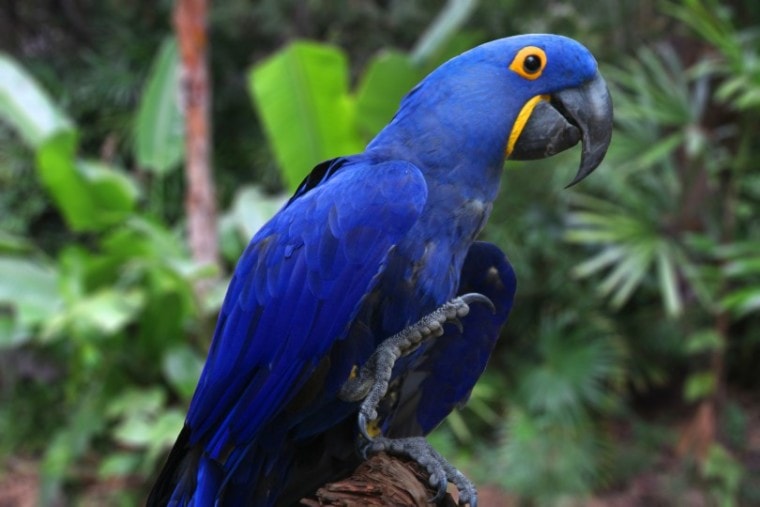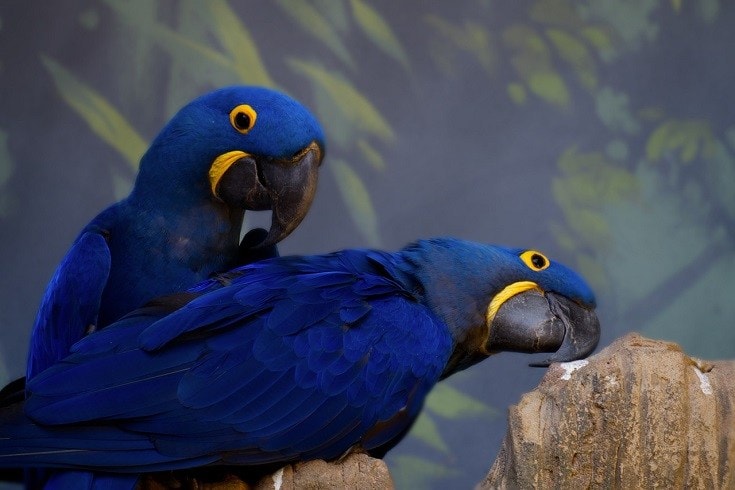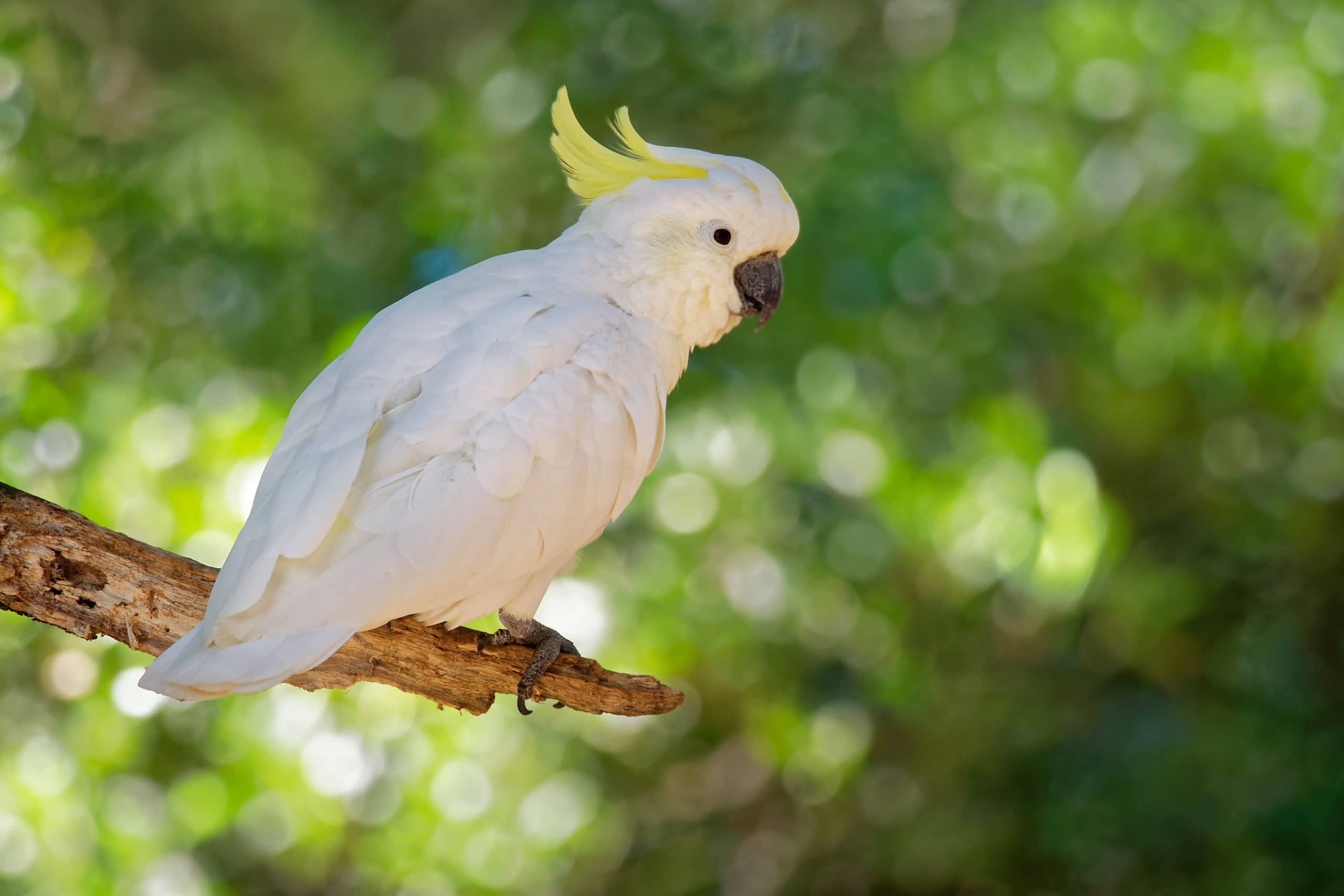
The Hyacinth macaw bird is the biggest of the macaws and is actually recognized as the largest parrot in the entire world. These birds are even-tempered and highly intelligent. Although they can be enticing to have, they aren’t for everybody. They are sometimes loud and like to nip at things, meaning that they require a lot of time and energy from their owners. If you’re up for it, these birds make amazing pets that are mesmerizing to watch.
 Species Overview
Species Overview
| Common Name: | Hyacinth macaw, blue macaw |
| Scientific Name: | Anodorhynchus hyacinthinus |
| Adult Size: | 3 feet |
| Life Expectancy: | 60 years |
Origin and History
Hyacinth macaws originate from central and eastern parts of South America. Their three main populations are located in the Pantanal wetland regions in Brazil, the Amazon basin of Brazil, and eastern Bolivia and northeastern Paraguay.
This type of macaw prefers to hang around palm swamps and woodlands. They are usually in semi-open areas that don’t have a lot of dense or humid forests. They also like to dwell around rivers.
The first Hyacinth macaw was documented in 1790 by John Latham. Since then, its numbers have steadily declined in the wild. This decrease in population is because of habitat reduction and an increase in demand for birds in the pet trade. They are also hunted by tribes for meat and their ornamental feathers. The Hyacinth macaw is currently on the endangered species list, and they are protected by law in Brazil and Paraguay.

Hyacinth Macaw Colors and Markings
Hyacinth macaws are easy to spot. Unlike regular macaws with many different colors, these birds have dark blue feathers all over their body, large black beaks, and bright yellow rings around their eyes and chin.
Where to Adopt or Buy a Hyacinth Macaw
It isn’t exactly easy to adopt or purchase a Hyacinth macaw. These birds are sometimes sold at pet stores, but you’re likely to have more luck buying them from a breeder. These are large birds and require a big commitment in time and money. One macaw could cost anywhere from $700 to $18,000 depending on where you live and who you buy them from.
To save some money, check with local animal rescues or adoption agencies for a chance to bring home a macaw that was given up for adoption. This is a simple way to save cash, but ensure that they have a health check before bringing them home with you.
 Caring for Hyacinth Macaws
Caring for Hyacinth Macaws
We do not recommend Hyacinth macaws as pets if you have never owned a bird before. They demand a lot of personal time and attention compared to other bird species. Although large and alluring, think about it in depth before following through.

Living Space
Macaws require a spacious area to live in, and there aren’t a lot of commercial cages that are large enough for them and strong enough to prevent them from breaking out of. Custom-designed cages are usually necessary and are another cost you’ll have to factor into the overall price. An entire room dedicated to them is an even better option. Even if it has its wings clipped, they still enjoy stretching their wings and flapping them around the entire house.
Toys & Interaction
Hyacinth macaws can also be destructive. They demand a lot of wooden toys or branches to chew on. If not, they’ll start to mouth you or the precious items around your home. These macaws seem to enjoy learning and spending time with humans. However, because they are social, they need interaction to keep them busy and out of trouble. Neglected birds that are stuck in their cages for days on end often end up screaming, mutilating themselves, and destroying the environment around them. You’ll have to make sure they aren’t plucking their feathers out from boredom. If you spend long hours at work, these are not the pets for you.

Food & Diet
Wild Hyacinth macaws eat lots of fruits, nuts, and vegetation. Their beaks are even strong enough to crack coconuts. Captive macaws do well on a similar diet. You’ll have to buy a lot of macadamia nuts since they require more carbohydrates than other parrot species. If necessary, their daily diet can be supplemented with food pellets that are specific to their species.
Common Health Issues of Hyacinth Macaws
The biggest issue that bird owners come across is overgrown beaks. This is where the steady supply of wooden toys comes in. The constant chewing keeps their beaks from overgrowing. Other common health issues include psittacosis and Papilloma disease. The best way to ensure good health in your pet macaw is with a balanced diet, regular health exams, and exercise.
 Final Thoughts
Final Thoughts
Pet macaws are a lot of work, but they are intriguing to watch and interact with. Those who love birds and have the time to dedicate to them are going to love having them as a part of the family. Although they’re large, they make up for it with their big personalities and gentle, docile demeanors. If you’ve been thinking about adding a macaw to your family, make sure you are ready to handle and afford them so that they live healthy lives in a home where they feel safe and loved.
Featured Image Credit: Erika Kirkpatrick, Shutterstock

 Species Overview
Species Overview Caring for Hyacinth Macaws
Caring for Hyacinth Macaws





